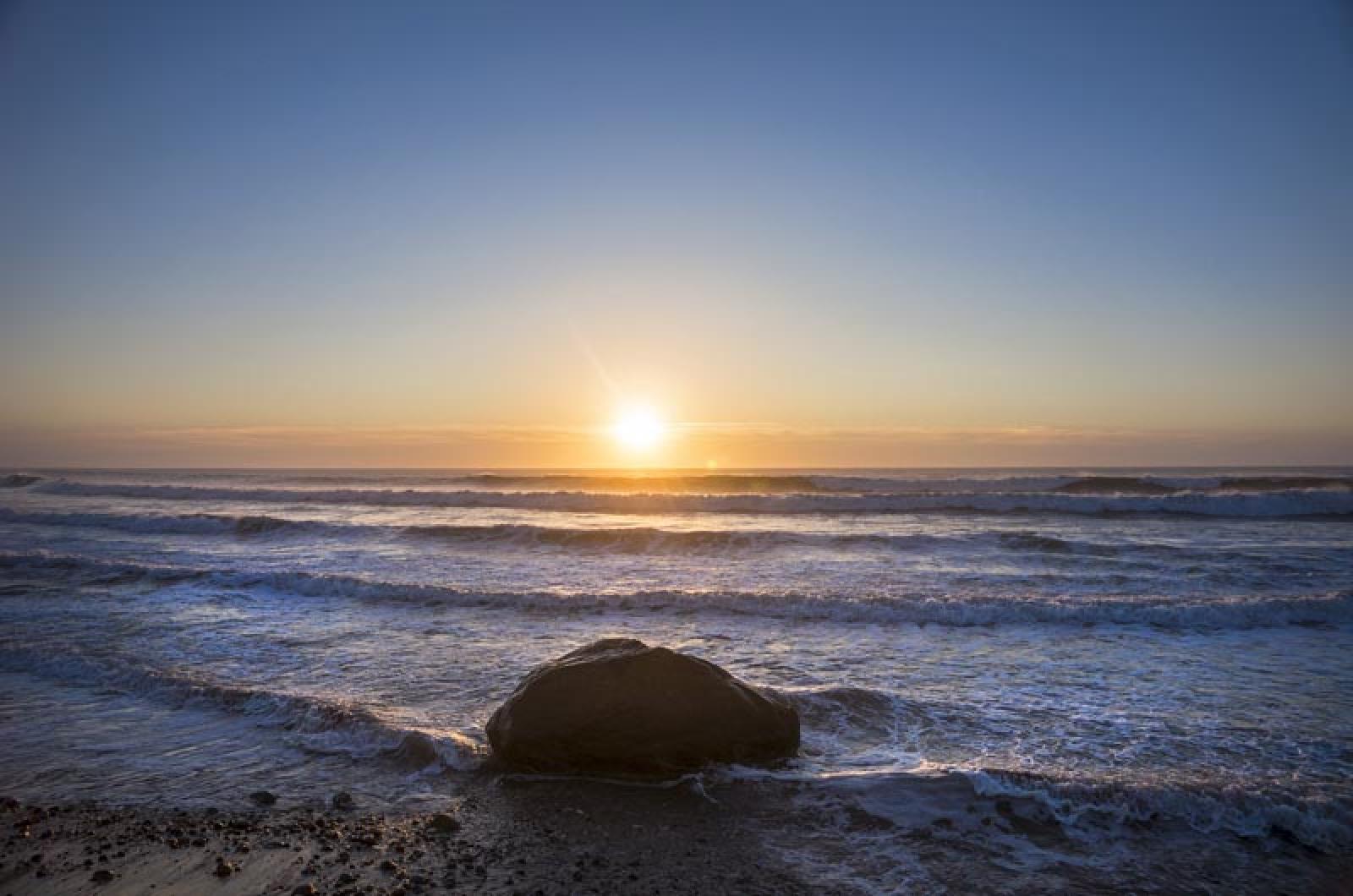Competing public interests over the prospect of sand mining off the Vineyard came to the floor during a public discussion hosted by the Martha’s Vineyard Commission late this week.
“As a society we are losing sight of the greater good faster and faster every day,” said Doug Ruskin, who encouraged the commission to use its authority to its full extent to limit sand mining.
“Our economy depends in a large way on public beaches,” said Oak Bluffs selectman Greg Coogan, whose town has expressed interest in sand mining. “So we are looking for alternatives on this and I think we are learning as we go.”
The comments came Thursday night at the meeting held at the commission office in the Olde Stone Building in Oak Bluffs. The meeting was a followup to a public hearing in October on the draft state Ocean Management Plan. MVC coastal planner Jo-Ann Taylor facilitated. A public comment period on the draft ocean plan ends Nov. 25.
About 20 Islanders, including selectmen from Oak Bluffs and Chilmark, members of the MVC, Island fishermen and other citizens, attended. Most, but not all, who spoke were opposed to sand mining in Vineyard and Nantucket Sound, as outlined by the state in its draft plan.
The state office of Coastal Zone Management is looking at the possibility of launching several sand mining pilot projects in the next five years, although funding sources for the projects and details about how they would be run were unclear.
On the Vineyard, competing public interests are a central issue. The state believes that nourishing beaches with offshore sand is often less detrimental than reinforcing with hard structures, which can block the natural flow of sand and affect areas down current from jetties and revetments. But fishermen and others are alarmed over the prospect of disturbing the ocean floor and the sea life it supports.
Town officials in Oak Bluffs have sent letters to the state supporting sand mining. The Chilmark selectmen have written to strongly oppose mining for sand in Vineyard Sound, which provides habitat for many species of fish and shellfish. One goal of the meeting Thursday was to find some common ground.
Ms. Taylor said she believed a unified response would have a much bigger influence on the final draft and she worried that the opposing views might end up cancelling each other out.
“It makes it difficult for the Martha’s Vineyard Commission or any of the neighboring towns to lend support to one or the other of those positions,” she said.
Much of the area identified in the plan for sand mining is in waters northeast of the Vineyard.
Wesley Brighton, a Chilmark fisherman, presented maps of the proposed areas which coincide with the main breeding grounds for conch, which burrow into the sand and mud to lay their eggs.
“It’s our most important ecosystem,” he said. “And it’s the epicenter of the conch fishery all up and down the New England states and Atlantic states.” He said the area is a spawning ground for all the local fisheries.
Chilmark selectman Warren Doty said winter flounder take 20 to 25 days to hatch, and that along with many other species, they feed on bottom-dwelling organisms. “It is their entire environment until they are almost a year old,” he said. “And it is the bottom of the food chain that starts right in that first six inches.”
Ms. Taylor asked if Oak Bluffs would support the removal of Vineyard Sound from consideration for sanding mining, and Mr. Coogan indicated a desire to compromise. “I would expect we’d go back and talk about it and consider if our needs are important enough to destroy the world or not,” he said.
Oak Bluffs shellfish constable David Grunden spoke about the need for additional sand on town beaches and on the importance of beaches in protecting town roads and infrastructure.
“Oak Bluffs has a lot of in-town infrastructure that is at risk if we don’t protect it,” he said. He added that the state won’t allow hard structures for beach management, so beach nourishment is one solution.
“Sand mining is an option we need to look at,” Mr. Grunden said. “Just about every other state on the East Coast mines sand for beach nourishment.”
Areas defined in the plan do not include waters within 1,500 feet of the shore, but some are within the three-mile jurisdictions of the towns. Ms. Taylor encouraged the north shore towns, which share waters with Gosnold, to consider amending their bylaws to be more restrictive.
“We are prepared right away to help north shore towns work on wetlands bylaws,” she said.
She also suggested using sand from Sengekontacket Pond to replenish Oak Bluffs beaches, since the pond already has too much sand, especially in the inlet under the Little Bridge. But Mr. Grunden argued that Sengekontacket Pond was itself a valuable habitat for shellfish, and that removing sand would disturb quahaugs, which take up to five years to reach minimum size for harvesting. He supported the use of bylaws or regulations that would allow towns to exert more control over their coastal waters.
The commission has already approved a draft response to the plan. Executive director Mark London said supplementary comments could be added. “I think we’ve heard tonight what everybody’s concerns are,” he said.
He was doubtful that the state would push forward on the pilot projects over the opposition of the towns and the MVC, and said any developments up to three miles from shore would need MVC approval.
“We can try to influence the state in any way what we want, and no matter what they do we can prepare guidance on sand mining,” Mr. London said. “It appears that we and the towns have the legal authority.”




Comments (6)
Comments
Comment policy »